

The opening page of the Churchill Club’s story in the September 1943 issue of True Comics (see here)
The first-person accounts in Knud Pedersen’s voice derive from personal interviews and e-mail messages. Knud and I recorded interviews in Knud’s office in the Copenhagen Art Library each day between October 7 and 14, 2012. We spoke for nearly twenty-five hours in all, generating hundreds of pages of typed transcript.
When I returned home to the United States, we communicated by e-mail. Though Knud and I lived nearly four thousand miles apart, if I sent a question to him in the midafternoon Eastern Daylight Time—9:00 p.m. in Copenhagen—he would usually have a reply waiting for me when I arrived at my laptop the next morning. The deeper into the book I got, the more precise my questions became, and the more revealing Knud’s answers. When something didn’t make sense to me, I enjoyed the luxury of simply being able to ask a living protagonist to clarify seventy-year-old events. For example:
Phil: When you torched the wagon full of airplane parts, you say you used a magnesium “plate.” I don’t understand what this “plate” is or how it works. Can you help me clarify this?
Knud: The disc itself was made of magnesium. It was flammable by the use of a match. It did not explode. It burned but with an extremely clear flame.
During the course of two years, we exchanged nearly one thousand e-mail messages.
A third source of information is Knud’s published writing. Before his death, Knud was one of only two surviving Churchill Club members—the other being his Cathedral School classmate Helge Milo. Knud was the Churchill Club’s principal spokesperson from the very beginning. In May 1945, just after Denmark’s liberation from the German occupation, a publisher contacted Knud’s father seeking the opportunity to publish a book detailing the true story of the renowned Churchill Club.
Edvard Pedersen relayed the offer to Knud, who put it before the other club members (except for his brother Jens, who was away at university). He asked, “Is this something we want to do? If so, how shall we go about it?” There was general agreement that it was worth doing. Each Clubber solemnly agreed to write a chapter and read it aloud to the group when they met again in two weeks. But when they reconvened, only Knud had written anything. Knud read his piece aloud, to applause. “Why don’t you just keep going?” said his mates, and so he did.
Edvard Pedersen arranged to have a secretary type the finished manuscript, but—unbeknownst to Knud and his club mates—he had the typist cross out all the curse words just before publication. This angered the group when they finally saw the book, published in Danish in 1945 with the title Bogen om Churchill-klubben (The Book of the Churchill Club). It was revised by Knud and reissued by several different publishers over the years.
Knud supported his narrative by publishing police records and military documents. He became a dogged and creative researcher. He found photos and newspaper accounts, digging up an incontrovertible record of the group’s pioneering impact. He unearthed ministerial letters, correspondence between German and Danish authorities, prison documents, and newspaper accounts. He amassed an unusually rich trove of images—cartoons, photos, headlines. He made this material freely available to me and helped me sift through it since the treasure is entirely in Danish.
All this is to say that by far the richest source for this book was Knud Pedersen himself. A week of interviewing in Copenhagen, the hundreds of e-mail messages we exchanged, and translations of the books he wrote in Danish so long ago—these were the prime sources that this very lucky writer had to draw from.
In addition, Clubber Eigil Astrup-Frederiksen (who later changed his name to Foxberg) wrote his own account of his Churchill Club experience in a 1987 book in Danish, whose title translates to The Churchill Club as Eigil Foxberg Experienced It. It is especially helpful in describing the boys’ incarceration at Nyborg State Prison. Churchill Clubbers Helge Milo and Mogens Fjellerup have also been briefly quoted in published sources.
Patricia Bibby Heath, who developed a special friendship with Knud after his release from prison, granted me a telephone interview of a little more than an hour on April 26, 2014.
The notes here present sources of information used to supplement the material derived from Knud Pedersen. Abbreviated source references refer to works cited in the Selected Bibliography.
1 OPROP!
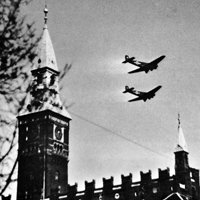
Operation Weserübung: For insight into the German invasion of Denmark and Norway on April 9, 1940, see www.nuav.net/weserubung2.html. Also see C. Peter Chen, “Invasion of Denmark and Norway, 9 Apr 1940–10 June 1940,” ww2db.com/battle_spec.php?battle_id=93. Chen’s article includes an extensive timeline of Operation Weserübung and a collection of over fifty photographs.
The Invasion of Norway: An extensive description of Germany’s invasion of Norway and Norway’s response can be found at Wikipedia’s page “Norwegian Campaign,” en.wikipedia.org/wiki/Norwegian_Campaign.
2 THE RAF CLUB
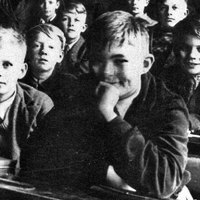
stories of Norwegian civilians being murdered by German troops: See Palmstrom and Torgersen, “Preliminary Report of Germany’s Crimes Against Norway.”
Hitler Youth: See Bartoletti, Hitler Youth, for an excellent treatment of the Hitler Youth movement.
RAF: See the documentary film “The Battle of Britain,” narrated by Ewan and Colin McGregor (Toronto: BFS Entertainment, 2011), available on DVD.
Hitler and Bicycles: Niels-Birger Danielsen. Werner Best (Copenhagen: Politikens Forlag, 2013), pp. 274–75.
3 THE CHURCHILL CLUB

Why the Aalborg Airport Was So Important: During the course of the war the airport was expanded enormously. More than two hundred farmers were relocated, and the farms adjoining the airport were taken over by the Germans. Hangars, repair depots, and command posts were erected in haste and camouflaged to look like barns and farm buildings. At the peak of Germany’s Norwegian campaign, 150 planes of several types, the majority being Stuka dive bombers, attacked locations in Norway from the Aalborg airport. They also served to protect submarines stationed along the piers in Aalborg and German ships traveling between Norway and northern Germany. For more about the airport and the sabotage efforts of another young resistance fighter in Aalborg named Frode Suhr, see Lyle E. Davis, “The Making of a Spy,” The Paper, December 17, 2009, www.thecommunitypaper.com/archive/2009/12_17/index.php.
Holy Ghost Monastery: See en.wikipedia.org/wiki/Hospital_of_the_Holy_Ghost,_Aalborg.
Cathedral School: The school where six of the Churchill Club members studied has a fine Web site that includes material on the Churchill Club, www.aalkat-gym.dk.
4 LEARNING TO BREATHE
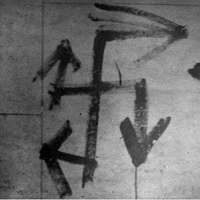
Danish folk songs … “King’s Badges”: See Ackerman and Duvall, A Force More Powerful.
The Limfjorden Bridge: Aalborg and the neighboring town of Noerresundby are separated by a fjord—a long, narrow, water-filled inlet with steep sides or cliffs, created by glacial erosion—known as Limfjorden. During the war, the two towns were connected by a road bridge and an iron railway bridge. Because the strategically important Aalborg airport is on the Noerresundby side, armed German soldiers guarded access carefully with checkpoints on both ends of the bridges. Visit the Limfjord Museum’s Web site for more information about the waterway: www.limfjordsmuseet.dk.
5 FLAMES OF RESISTANCE
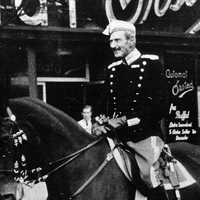
Marie Antoinette had used the same code pattern: Hans Jøergen Andersen and Jens Pedersen developed a code for sending sensitive messages between the Churchill Club in Aalborg and the RAF Club in Odense. It was based on a famous code used by Marie Antoinette and her friend Count Axel von Fersen of Sweden in their secret correspondence during the French Revolution. For more, and an example of how the code actually worked, see www.h4.dion.ne.jp/~room4me/america/code/fersen.htm. For background about Count von Fersen and Marie Antoinette, see en.chateauversailles.fr/history/court-people/louis-xvi-time.
7 WHIPPED CREAM AND STEEL
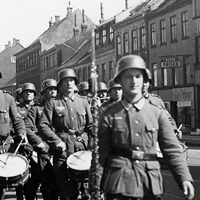
eastern front: In August 1942, Hitler’s huge Sixth Army fought Russian troops at the Russian city of Stalingrad. That was the key battle of the eastern front and a turning point of World War II. Over five months of brutal fighting, Russian forces held on to Stalingrad and then turned the tables on their Nazi enemy. There are many Web sites about this brutal battle. A fine book is Antony Beevor, Stalingrad: The Fateful Siege, 1942–1943 (New York: Viking, 1998).
Kristine: Lovely photos and lush remembrances of this, the classiest bakery in Aalborg and the favorite of sweet-toothed Nazi officers, to be found at www.facebook.com/media/set/?set=a.205034729522481.61915.203935242965763&type=1.
12 KING HANS GADES JAIL
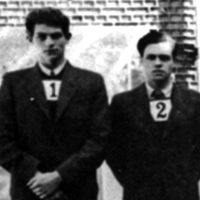
Rector Kjeld Galster: Kjeld Galster, Aalborg Cathedral School During the Occupation (Aalborg, Denmark: 1945).
Some students rose from their seats: See the source materials on the Churchill Club at the Cathedral School Web site, especially section 9 (www.aalkat-gym.dk/om-skolen/skolens-historie/churchill-klubben-og-besaettelsen/churchill-9/).
Kaj Munk: For more information about the life and activities of Denmark’s best-known playwright and most famous supporter of the Churchill Club, see www.kirjasto.sci.fi/kajmunk.htm.
13 WALLS AND WINDOWS
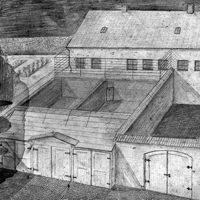
The Nazis had … allowed Sweden to be officially neutral: Here is a link to a good discussion regarding why Germany did not invade Sweden and instead allowed the nation to be officially neutral: en.wikipedia.org/wiki/Sweden_during_World_War_II.
songs about Hitler: There were hundreds of anti-Nazi songs during World War II, many obscene. Some derided the “big four” Nazi leaders—Hitler, Goebbels, Himmler, and Göring. For a broader treatment of the songs of World War II, see www.fordham.edu/halsall/mod/ww2-music-uk.asp.
15 NYBORG STATE PRISON
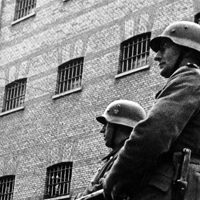
“I missed my mates”: See Laursen, Churchill-Klubben som Eigil Foxberg oplevede den, p. 46.
“His tone was apologetic”: Ibid., pp. 56–57.
The Telegram Crisis: See Ackerman and Duvall, A Force More Powerful, p. 218.
August 29, 1943: Ibid., p. 221.
The turning point for Denmark: See Ackerman and Duvall, A Force More Powerful, p. 230; Levine, Darkness Over Denmark; and Tveskov, Conquered, Not Defeated.
The Rescue of Danish Jews: The quickly organized boatlift of most of Denmark’s Jews to safety in Sweden is Denmark’s proudest moment during the war. Many accounts have been written. In particular, see Ackerman and Duvall, A Force More Powerful, p. 222; Levine, Darkness Over Denmark; and Lowry, Number the Stars.
16 FIRST HOURS OF FREEDOM
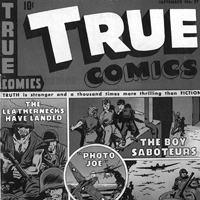
The factory was an obvious target: There are two versions of who was responsible for the factory arson in Naesby. One is as Knud and Jens Pedersen learned it from Knud Hedelund at the party in Odense, and has been reported in these pages. A second account comes from records of communist saboteurs working in Odense. As the resistance movement became better organized and spread throughout Denmark, activists tried to recruit members of the RAF Club because—though young—they were experienced saboteurs. Communist partisan groups—known as “p-groups”—were especially persistent. But the RAF was unwilling to be controlled by anyone, especially planners from the Soviet Union. The RAF turned the Communists down, causing bad blood.
The two groups met quite by accident at the factory on the night of the fire. By pure coincidence, both the RAF Club and the communist p-group had planned to torch the same factory at the same time. Hans Jøergen Andersen later reported that he set the fire, accompanied by three other RAF Clubbers. Two p-group members told a newspaper reporter in 1995 that, no, it was their group that had set the factory ablaze.
“I have given my version,” noted Knud Pedersen. “I think it is just fair to note that there is another version.”
17 BETTER ON THE INSIDE
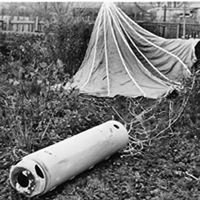
Patricia Bibby had wanted to meet Knud Pedersen: Author’s April 26, 2014, interview with Patricia Bibby.
The SOE: See Knud J. V. Jespersen’s English-language account No Small Achievement: Special Operations Executive and the Danish Resistance 1940–1945 (Copenhagen: University Press of Southern Denmark, 2002).
“My name is Helge Milo”: Cathedral School Web site, www.aalkat-gym.dk/fileadmin/filer/import/Churchill/Kilder/kilde_16_og_17.pdf.
Eigil found himself accepting: See Laursen, Churchill-Klubben som Eigil Foxberg oplevede den.
His spirits plunged: Author’s April 26, 2014, interview with Patricia Bibby.
Gertrud Pedersen, Patricia Bibby, and Inger Vad Hansen: Resistance Fund-raisers: Ibid.
Liberation!: For more about the Danish Liberation, see Levine, Darkness Over Denmark, pp. 139–45, and Tveskov, Conquered, Not Defeated, pp. 85–91.